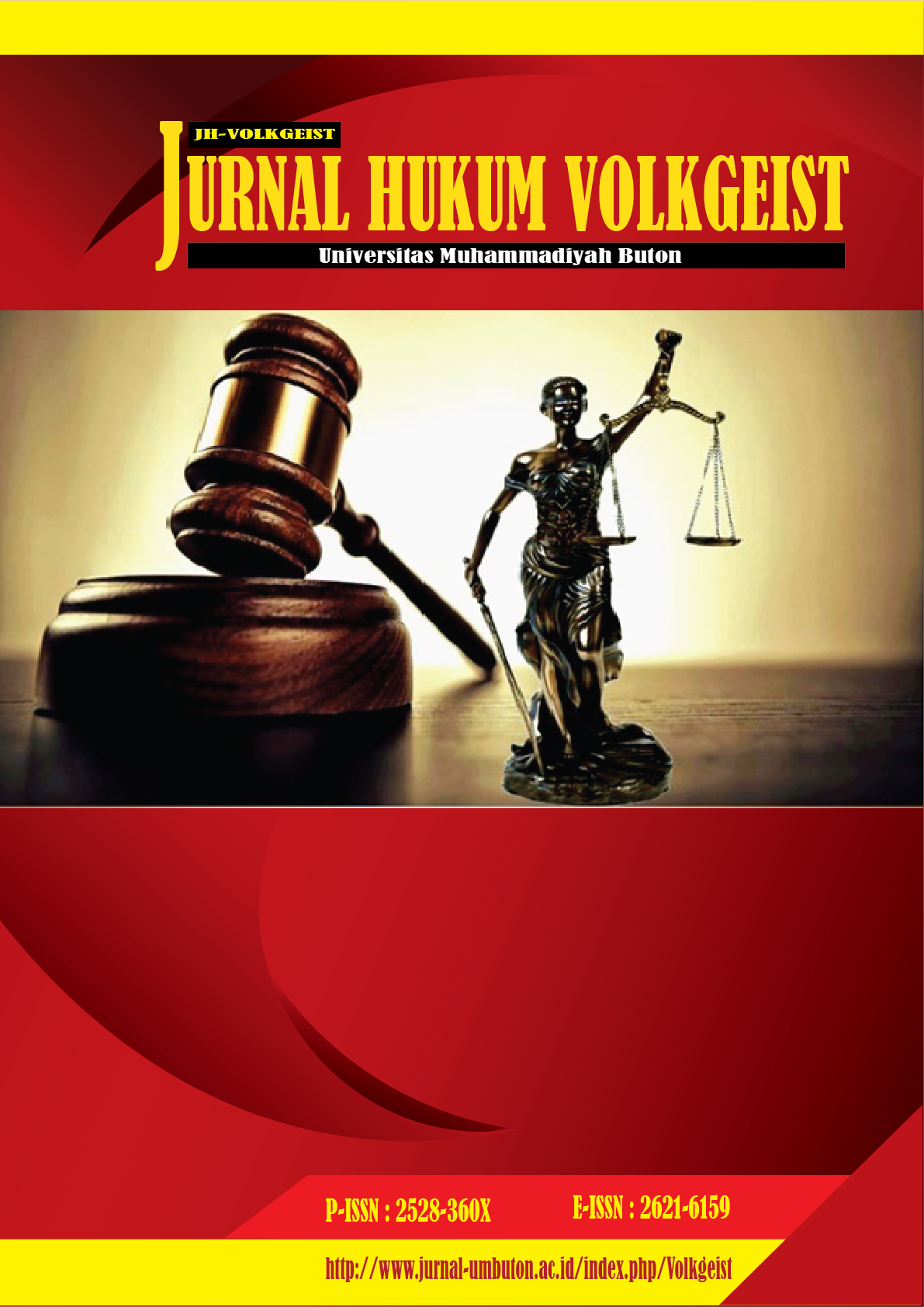The National Narcotics Agency of Kupang City’s Ideal Method for Handling Drug Abuse
DOI:
https://doi.org/10.35326/volkgeist.v6i2.1395Keywords:
handling; ideal; narcotics abuseAbstract
This paper discussed the ideal method for resolving cases of drug abuse by the National Narcotics Agency of Kupang City, East Nusa Tenggara, Indonesia. This study used a sociological juridical approach that is based on the provisions of laws and regulations related to legal theories. It sees the reality that occurs in society, namely the method to resolve the drug abuse issues. The results of the research showed that in handling cases of drug abuse, the National Narcotics Agency of Kupang City carried out the processes of investigation, the transfer of the case to the public prosecutor, and its transfer to the district court. Drug abusers who were red-handedly caught may obtain medical and social rehabilitation based on the judicial decision. It is concluded that the National Narcotics Agency of Kupang City has undergone ideal methods in handling cases of drug abuse.
Downloads
Downloads
Submitted
Accepted
Published
Issue
Section
License
- Author retains the copyright and grants Jurnal Hukum Volkgeist the right of first publication of the work simultaneously licensed under the Creative Commons Attribution-ShareAlike 4.0 License that allows others to share the work with an acknowledgment of the work's authorship and initial publication in this journal
- The author is able to enter into separate, additional contractual arrangements for the non-exclusive distribution of the journal's published version of the work (e.g., post it to an institutional repository or publish it in a book) with the acknowledgment of its initial publication in this journal.
- The author is permitted and encouraged to post his/her work online (e.g., in institutional repositories or on their website) prior to and during the submission process, as it can lead to productive exchanges, as well as earlier and greater citation of the published work (See The Effect of Open Access).









.png)































